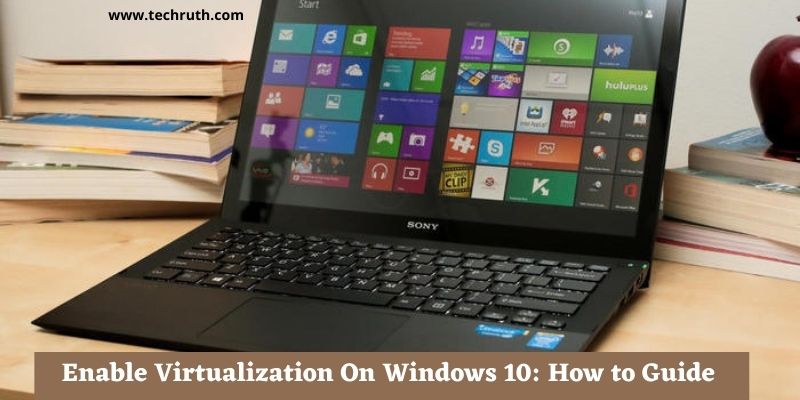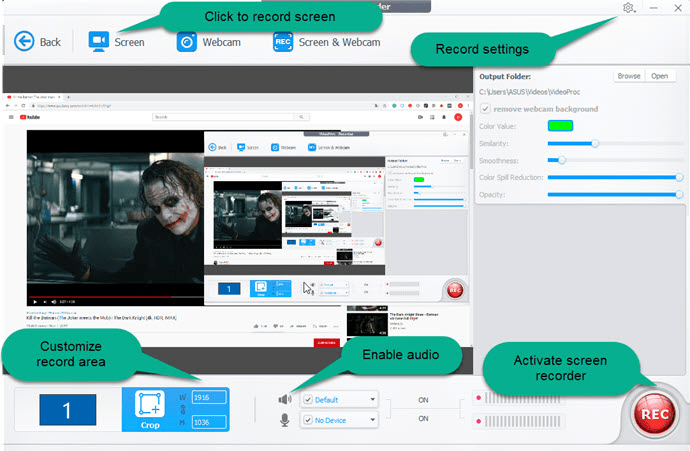Do you want to enable Virtualization on Windows 10? Yes, it is possible. Today we will talk about how to Enable Virtualization on Windows 10.
Well, this feature was introduced in Windows 8, and then later Microsoft added a few more features to it, and when Microsoft released the new update for windows 10 on 10th May 2019 built-in and named it Windows Sandbox.
Windows 10 allows you to create a virtualization computer on your system so that if you want to install a different operating system you can, you can install separate software in the virtual computers so no one can access them.
For example, if you are looking to test software you can create a virtual computer and install the software without using your actual computer. Or you can install Linux, Ubuntu, or any other operating system on that.
So without any further delay let’s dive into the main topic and find out how to enable Virtualization on Windows 10.
How To Enable Virtualization On Windows 10 & What Are Requirements?
- Before we tell you the procedure of enabling Virtualization on Windows 10, you need to know the basic requirements for this. Because if all these features are not enabled on your device, we are sorry, you can’t execute this, therefore make sure you have all the features on your device.
- A 64-bit processor that enables (SLAT) Secondary Level Address Translation.
- Enterprise, Windows 10 Pro, or Education version. If you are not using any of the windows versions you should upgrade your windows. For Windows, Home users can update it by using Settings > Update And Security > Activation. This will upgrade the windows.
- 4 GB Of Ram
- BIOS Hardware Virtualization Supportable.
Hardware Enable Virtualization On Windows 10
For performing this, you will have to enable hardware, and for checking there are two methods available. Find them below.
Method 1
Step 1:
Go to the start button and find “Run” or press “Windows + R” and type “CMD” to launch the Run.
Step 2:
Type this command into Run [systeminfo.exe]. It will take up to 5 seconds to show the result.
Step 3:
Once the result is displayed find the “Hyper-V Requirements” and “Virtualization Enabled In Firmware: Yes”
Method 2
Step 1:
Simply open the “task manager” or press “ALT+CTRL+DEL”.
Step 2:
A window will show on the screen.
Step 3:
Click on the “Performance”.
Step 4:
Bottom of the window fine Virtualization.
If the Virtualization is enabled that is perfect, but if this is disabled then go to the BIOS and enable it.
Read: How to Activate Windows 10 Without Product Key Free?
How To Enable Virtualization on PC BIOS Setting:
Bios is one of the key things for any computer and every computer or any device has different bios. Accessing the bios on a different computer is also not the same process.
But there are a few keyboard keys you can try to access the bios. (DEL, F1, F2, F8, F10, And F12). These keys are commonly used for accessing the bios. Hit the key continuously till you see the Bios screen on the monitor.
The location of this feature may differ in every BIOS, but you can take a basic idea of where it is located. Follow the steps to enable Virtualization on PC bios.
BIOS Method
Step 1:
Go to the bios and find the “Advanced” tab or “Configuration tab”.
Step 2:
Find “Intel Virtual Technologies”.
Step 3:
By default it is disabled you can select and hit enter to change to enable.
Step 4:
Or you can google it according to your Bios.
Note: As we mentioned above, Bios is a risky thing, if anything goes wrong, it may impact your motherboard or motherboard may get damaged as well, so our recommendation is to perform this under an expert.
UEFI Method
If you find it difficult to understand and Bios is a bit risky to make changes. You can try this method instead of that. Follow the below steps.
Step 1:
Click on the start button.
Step 2:
Find settings, go to the recovery.
Step 3:
Go to the troubleshoot and then go to advanced settings.
Step 4:
Then go to UEFI Firmware Settings.
Step 5:
And restart your device.
Read: 9 Best Browser For Windows 10 In 2021 (For PC and Laptop)
How to Enable Hyper-V Virtualization in Windows 10
Now the Virtualization is enabled successfully, and our last step is to enable Hyper-V Virtualization in windows. Find the step-by-step guide below.
Step 1:
Simply click on the search tab which is located next to “Start Button”.
Step 2:
Type in the search tab “turn windows features on or off” and hit enter.
Step 3:
Wait for a second until it loads all the services. And once all services are displayed.
Step 4:
Scroll down and find “Hyper-V”. As you can see it is by default unchecked, click on the square box and hit the ok button.
Step 5:
The window will start installing the required file to install Hyper-V Virtualization on your computer.
Step 6:
And windows will ask you to restart your computer. Tab on the restart button.
Conclusion
Well, Windows 10 has an amazing feature called Virtualization. These features help you to create a virtual computer on your actual computer. The virtual computer is completely different from the actual computer.
You can install any software on that, any operating system or you can do anything on a virtual computer, and it will not impact your actual computer. However, for performing this stuff, you will be required to use certain hardware which we have discussed above in this article.
And along with that, we have instructed you on how to enable Virtualization from bios. Later we shared the step-by-step process of How To Enable Virtualization On Windows 10.
We hope this article was helpful for you, if you have any questions or suggestions regarding How To Enable Virtualization On Windows 10 you can leave us a comment below.







